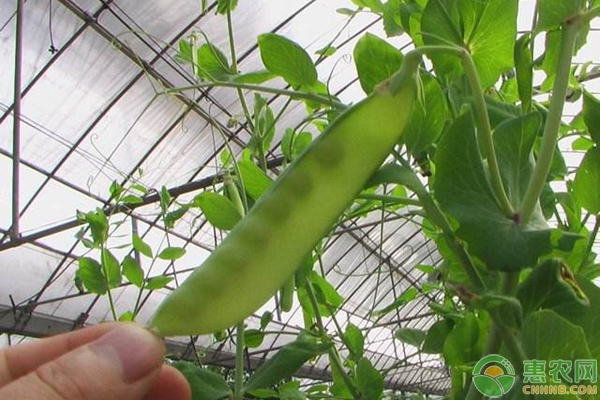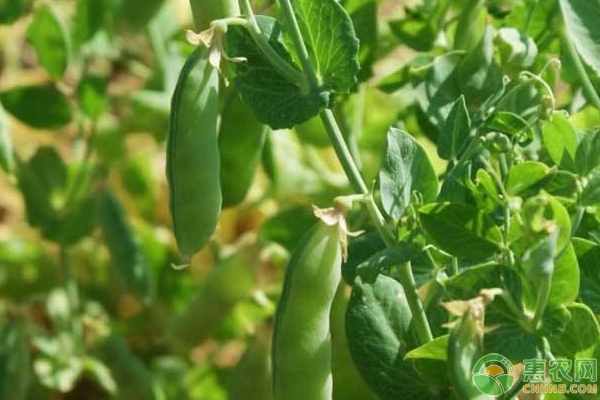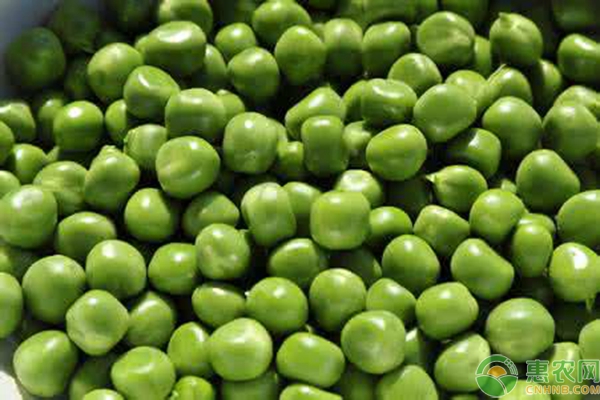Characteristics, cultivation techniques and pest control measures of sweet pea No.1 pea
é—½ sweet pea No. 1 is a new cultivar of semi-vine sweet peas selected by the Crop Research Institute of Fujian Academy of Agricultural Sciences with the cross of “athos×Taizhong 13â€. In 2014-2017, it was introduced into the middle rice area of ​​Changting County, Fujian Province. Generally, it is 750~1000kg per acre of green pods. The yield is stable and the harvesting period is concentrated. It has gradually become one of the main crops for farmers in Changting County to increase their income. Today, Xiaobian talks about the characteristics, cultivation techniques, and pest control measures of the sweet pea.

1 Characteristic characteristics
é—½ sweet pea No. 1 from sowing to initial flowering for 60~65 days, from flowering to harvesting for 15~20 days, sowing to the beginning of the harvest period of about 80 days.
The pea pods are oblate, the single pod weighs about 6.5g, and each pod contains 4-6 grains of seeds. The pods are fragrant, sweet and taste good.
The suitable sowing time in winter in Fujian Province is from October to November. Generally, the green pods per acre are 800~1000kg, the yield is stable, and the harvesting period is concentrated.

2 high quality and high yield cultivation techniques
2.1 Soil requirements and selection
Choose soil loose, fertile soil, convenient irrigation and drainage, neutral to slightly acidic plots.
2.2 Reasonable determination of sowing date
Sowing is suitable for October-November.
2.3 Soil preparation and fertilization
After the harvest, the borax 2~2.5kg and the lime 80~100kg per acre are applied to the whole field, and then the ridge is used to ridge the ridge by 1.0~1.1m, and the base ditch is applied to the base ditch.
2.4 Sowing
2.4.1 Seed treatment before sowing: Each 1kg seed is seeded with 35% butyl thiocarbamate dry powder 16g.
2.4.2 Seeding rate: 3~3.5kg per mu.
2.4.3 Seeding method: double-row hole sowing, the distance between the holes is 10~15cm, the line spacing is 15~20cm, the ground is 5,000~6000 points per acre, and the 1-2 points are planted per hole, and the seed is planted with 2cm. After sowing, spray the surface with 90% acetochlor EC 1000 to inhibit weed growth.
2.5 Field Management
2.5.1 Moisture management: keep the soil moist, and in the case of drought, you can fill the “horse waterâ€; before the rain comes, clear the ditch to prevent stains.
2.5.2 Racking vines: When the seedling height is 10~15cm, the bamboo branches are in the middle of the two rows, and a wooden stick or bamboo tail of about 2m length is inserted every 3m to strengthen the supporting force of the bamboo branches. 30cm is tied with a plastic rope for 1 time.
2.6 Reasonable fertilization
2.6.1 Base fertilizer: combined with the whole hoe, 1500~2500kg of fully decomposed farmyard manure, or 250kg of commercial organic fertilizer, 15~15kg of compound fertilizer, 1.25~1.5 of borax in the middle of the ditch. Kg.
2.6.2 Topdressing: The seedling stage is treated with 1:90 times of urea solution once, and the seedling fertilizer is applied once every 10 days. The bud period is 20.30.20 for 20-30kg per mu. After the picking period, according to the growth of the seedlings, every 10~15 days, 10~15kg of 20..5..20 compound fertilizer is applied.
2.6.3 Top dressing: Spray 0.25% potassium dihydrogen phosphate and 1.5% amino acid liquid fertilizer in the pod-forming period, spray once every 10 days to promote the fullness and smoothness of the pods; when planting, use 0.1%~0.2% borax , 0.05% ammonium molybdate, Germany Kang Pu Shima blue foliar fertilizer 500 times liquid root spray 2~3 times.

3 pest control
3.1 Leaf brown spot disease
In the early stage of the disease, 325g/L benzotrizime 1000 times solution or 45% pyraclostrobin methyl thiophanate-dispersed granules 750 times solution was used for prevention and treatment.
3.2 Powdery mildew
When peas start to introduce vines, use 30% pyraclostrobin suspension 1500 times to prevent spraying; when peas start flower, use 50% cyprodinil water dispersion granule 1000 times solution or 25% powder oxazool suspension agent 1500 times liquid control.
3.3 Spodoptera litura larvae, pea pods
The flowering period is controlled by alternating spray of 30% worms, indoxacarb suspension 1500 times solution, or 5% chlorantraniliprole suspension agent 800~1000 times.
3.4 Locust
It is controlled by alternating spray with 70% imidacloprid water dispersing granule 5000 times or 80% ene apyridine pymetrozine powder 4000 times.
4 timely harvest
About 80 days after sowing, it is most suitable for harvesting, and the harvesting period is more concentrated.
For the wonderful pictures and popular comments on the pea planting technology of é—½ sweet pea No. 1, you may be interested in the following recommended contents, welcome to read.
Introduction and application of plant extracts
Plant extracts are chemical substances with biological activity extracted from plants, including nutrients, active ingredients, pigments, fragrances, acids and bases in plants.
Pharmaceutical field: plant extracts can be used to prepare drugs, such as using honeysuckle extract to prepare cold medicine, using licorice extract to prepare anti-inflammatory drugs, etc. At the same time, plant extracts can also be used to produce health products, such as the use of grape seed extract to prepare antioxidant health products.Cosmetic field: plant extracts can be used to prepare cosmetics, such as the use of green tea extract to prepare skin care products, the use of lavender extract to prepare perfumes, etc. The natural properties of plant extracts make them have a wide range of application prospects in cosmetics.
Food field: Plant extracts can be used to prepare food products, such as tea beverages using tea polyphenol extracts and fruit juices using anthocyanin extracts. The natural properties and biological activities of plant extracts make them have a wide range of application prospects in food.
In the field of health care products: plant extracts can be used to prepare health care products, such as the use of grape seed extract to prepare antioxidant health care products, the use of yeast extract to prepare immunity-enhancing health care products, etc. The natural properties and biological activities of plant extracts make them have a wide application prospect in health care products.
In conclusion, plant extracts have a wide range of application prospects to meet people's pursuit of natural, healthy and green lifestyles.
Plant Extract,Psyllium Husk Extract,Cordyceps Militaris Extract,Natural Ginseng Root Extract
Shaanxi Changsheng Industrial Co., Ltd. , https://www.cncsbio.com
